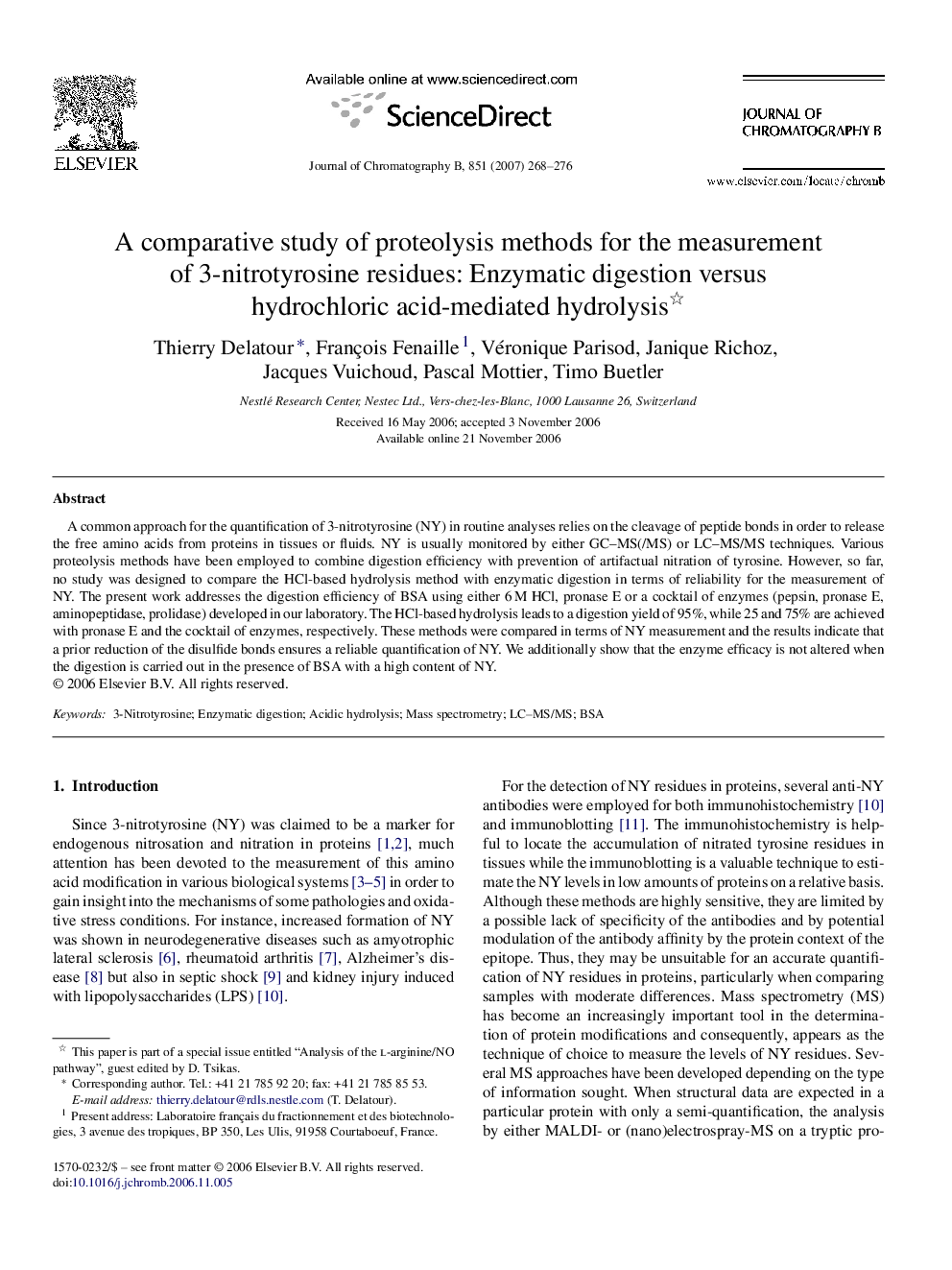| Article ID | Journal | Published Year | Pages | File Type |
|---|---|---|---|---|
| 1216194 | Journal of Chromatography B | 2007 | 9 Pages |
A common approach for the quantification of 3-nitrotyrosine (NY) in routine analyses relies on the cleavage of peptide bonds in order to release the free amino acids from proteins in tissues or fluids. NY is usually monitored by either GC–MS(/MS) or LC–MS/MS techniques. Various proteolysis methods have been employed to combine digestion efficiency with prevention of artifactual nitration of tyrosine. However, so far, no study was designed to compare the HCl-based hydrolysis method with enzymatic digestion in terms of reliability for the measurement of NY. The present work addresses the digestion efficiency of BSA using either 6 M HCl, pronase E or a cocktail of enzymes (pepsin, pronase E, aminopeptidase, prolidase) developed in our laboratory. The HCl-based hydrolysis leads to a digestion yield of 95%, while 25 and 75% are achieved with pronase E and the cocktail of enzymes, respectively. These methods were compared in terms of NY measurement and the results indicate that a prior reduction of the disulfide bonds ensures a reliable quantification of NY. We additionally show that the enzyme efficacy is not altered when the digestion is carried out in the presence of BSA with a high content of NY.
